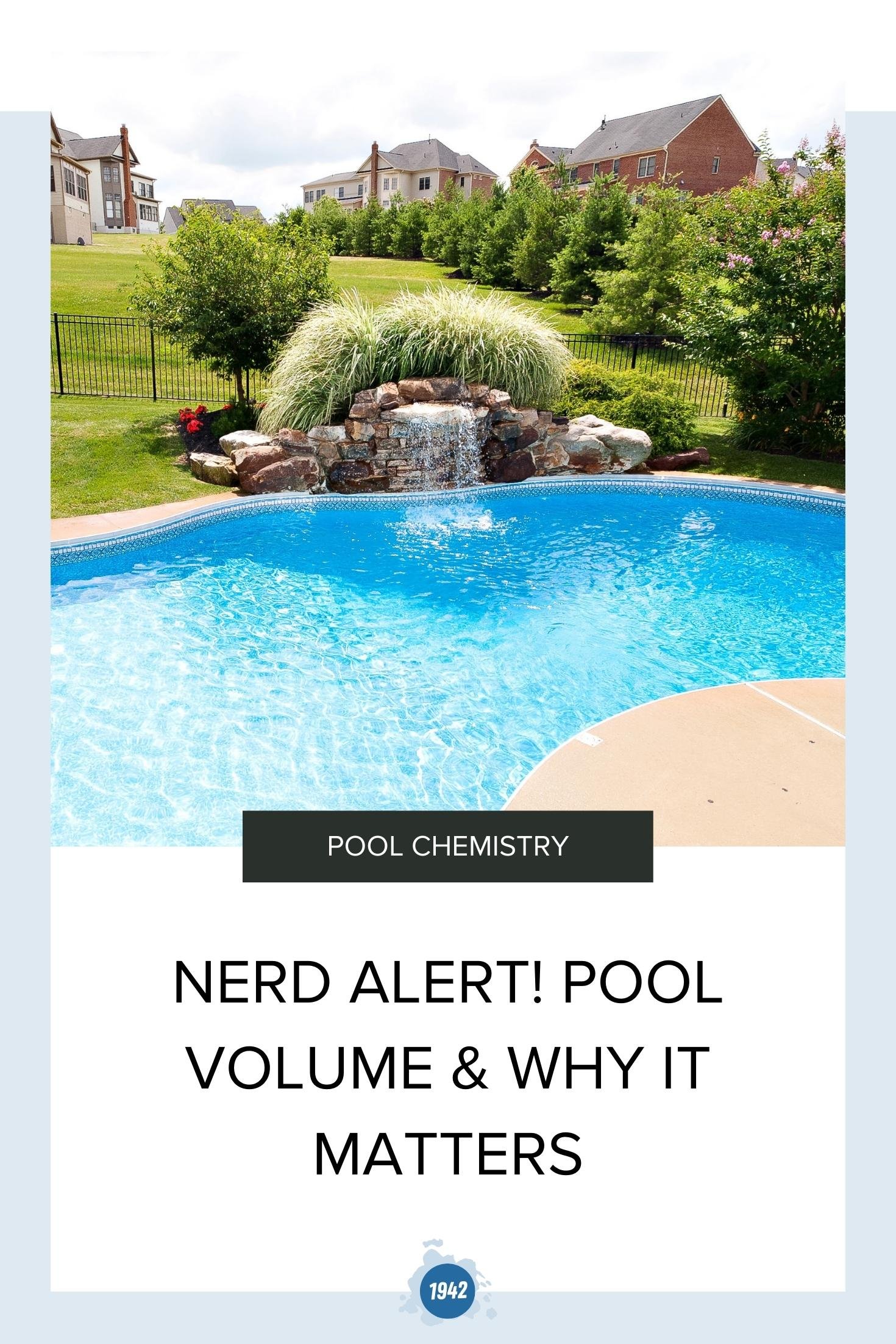NERD ALERT! POOL VOLUME & WHY IT MATTERS
When it comes to water chemistry, the volume of your pool is an important number that you need to know. Knowing the volume - the number of gallons in your pool - is essential.
The amount of pool chemicals needed to achieve and maintain water balance is dependent on the volume of water in your pool.
Underdosing means more work for you, and overdosing means more money, both of which are a nuisance. The nice thing is that you only need to figure this number out once and you're good to go.
If you're not interested at all in knowing how to calculate the volume of water in your pool yourself there are lots of pool volume calculators online. The Pentair Pool Volume Calculator is a good one. It will calculate not only rectangular, round, and oval shaped pools but also kidney-shaped pools as well.
The first thing to do is to measure your pool
(We've put together a worksheet to help you out.)
Quick Tip: When measuring the depth, measure only to the top of the waterline, not the wall. When measuring the length and width, measure only the surface of the water.
Pool Volume Formula
Length x Width x Average Depth x Multiplier = Volume in Gallons
Determine the Multiplier
Multiplier = 7.5 for rectangle, square, or free form pools
Multiplier = 5.9 for round or oval pools
Determine the Average Depth
To determine the average depth in a pool where the bottom slopes, measure the shallow end, and the deep end depth. Add them together and divide by two (2)
Example:
Shallow End = 2ft. Deep End = 8ft
2ft + 8ft = 10ft; 10 ÷ 2 = 5ft average depth
If most of the pool is only 3 or 4 feet and then drops off suddenly to 8 feet, you will have a different average depth. In this case, treat the pool as two separate parts. Measure the length, width, and average depth of the shallow section, then take the same measurements for the deeper section. Calculate the volume of the shallow section and add that to the volume you calculate for the deeper section.
Let’s just say that you have a rectangular pool 28’L x 14’W. Using the example above we have an average depth of 5’.
L x W x Avg Depth x Multiplier = Volume
28 x 14 x 5 x 7.5 = 14,700 gallons
Check out these worksheets that we've put together that will hopefully help out with recording your measurements and calculating the volume of your pool. You can always use the worksheets to record your measurements and then input the information into the volume calculator.
Remember that if we test your water, make sure that your volume is correct in our database! All of the instructions and chemical dosing that we recommend is based on the volume of water in your pool that is listed in our database.
/ HAPPY SWIMMING /
QUESTIONS?

